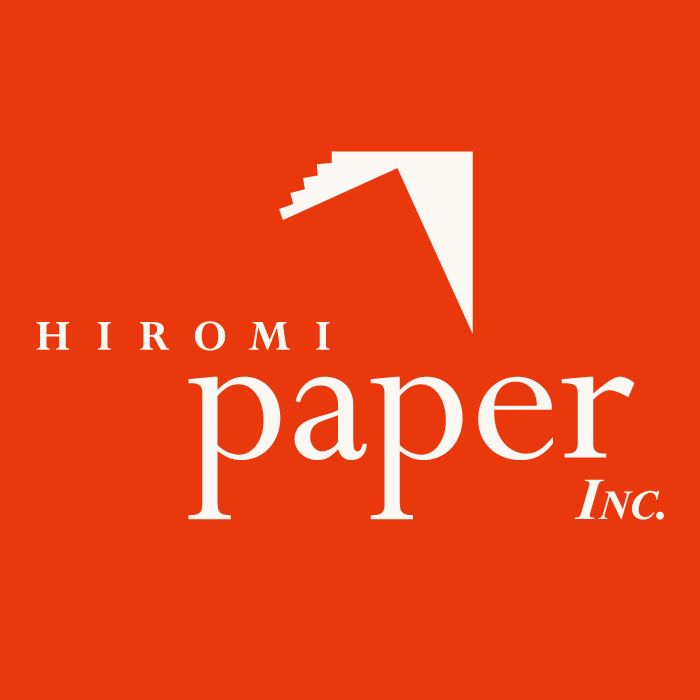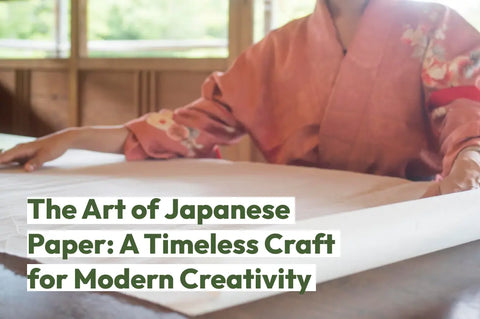For centuries, Japanese paper, known as washi, has been revered for its beauty, strength, and versatility. From traditional calligraphy to modern design and fine arts, washi continues to inspire creators around the world. At Hiromi Paper, we celebrate this timeless craft by offering an exquisite selection of Japanese papers and specialty papers from across the globe. Whether you're an artist, designer, or simply a paper enthusiast, understanding the uniqueness of washi can help you elevate your creative projects.
What Makes Japanese Paper Special?
Japanese paper is crafted using time-honored techniques that date back over a thousand years. Unlike mass-produced Western paper, which relies on wood pulp, washi is made from the fibers of plants such as kozo (mulberry), mitsumata, and gampi. These fibers contribute to the paper’s remarkable durability, softness, and delicate texture.

Key characteristics of Japanese paper include:
-
Strength & Longevity: Handmade washi is exceptionally strong, making it ideal for bookbinding, printmaking, and conservation.
-
Unique Textures: Each sheet carries a distinctive texture, adding depth and character to artwork and stationery.
-
Sustainability: Washi is eco-friendly, using renewable plant sources and traditional, low-impact production methods.
Uses of Japanese Paper in Art and Design
Japanese paper is a staple in various creative fields. Here’s how artists and designers incorporate it into their work:

-
Printmaking & Painting – Washi’s absorbency and texture enhance traditional and modern printmaking techniques, including woodblock printing (ukiyo-e) and ink painting (sumi-e).
-
Bookbinding & Calligraphy – Its smooth yet fibrous surface makes it an excellent choice for calligraphy, letterpress, and handcrafted books.
-
Interior Design & Lighting – Washi is often used in shoji screens, lampshades, and decorative panels, adding an elegant, organic touch to interiors.
-
Paper Craft & Origami – Due to its durability, washi is perfect for intricate origami designs, collage art, and mixed media creations.
-
Packaging & Stationery – Many luxury brands and artisans use Japanese paper for high-end packaging, invitations, and business cards.
Choosing the Right Japanese Paper for Your Project
With so many types of washi available, selecting the perfect paper can be overwhelming. Here’s a quick guide to help you decide:

-
For Calligraphy & Brushwork: Try Gampi paper, known for its smooth surface and ink retention.
-
For Printmaking: Kozo paper offers excellent strength and an organic feel, ideal for woodblock prints and etching.
-
For Stationery & Invitations: Handmade Mitsumata paper has a silky texture, adding a luxurious touch.
-
For Conservation & Restoration: Archival-quality washi, such as Usuyou papers, helps preserve delicate artwork and documents.
Caring for Japanese Paper
To maintain the quality of your Japanese paper, store it in a cool, dry place away from direct sunlight. Handle with clean, dry hands to prevent oils from transferring onto the paper. If creases or folds occur, lightly pressing the sheet with a warm iron between clean sheets of paper can help restore its smoothness.
Discover the Beauty of Washi at Hiromi Paper
At Hiromi Paper, we take pride in curating an extensive collection of fine Japanese and specialty papers for artists, conservators, and creatives. Whether you seek traditional handmade washi or contemporary eco-friendly papers, our selection offers something for every project.
Explore our collection today and experience the timeless elegance of Japanese paper!

